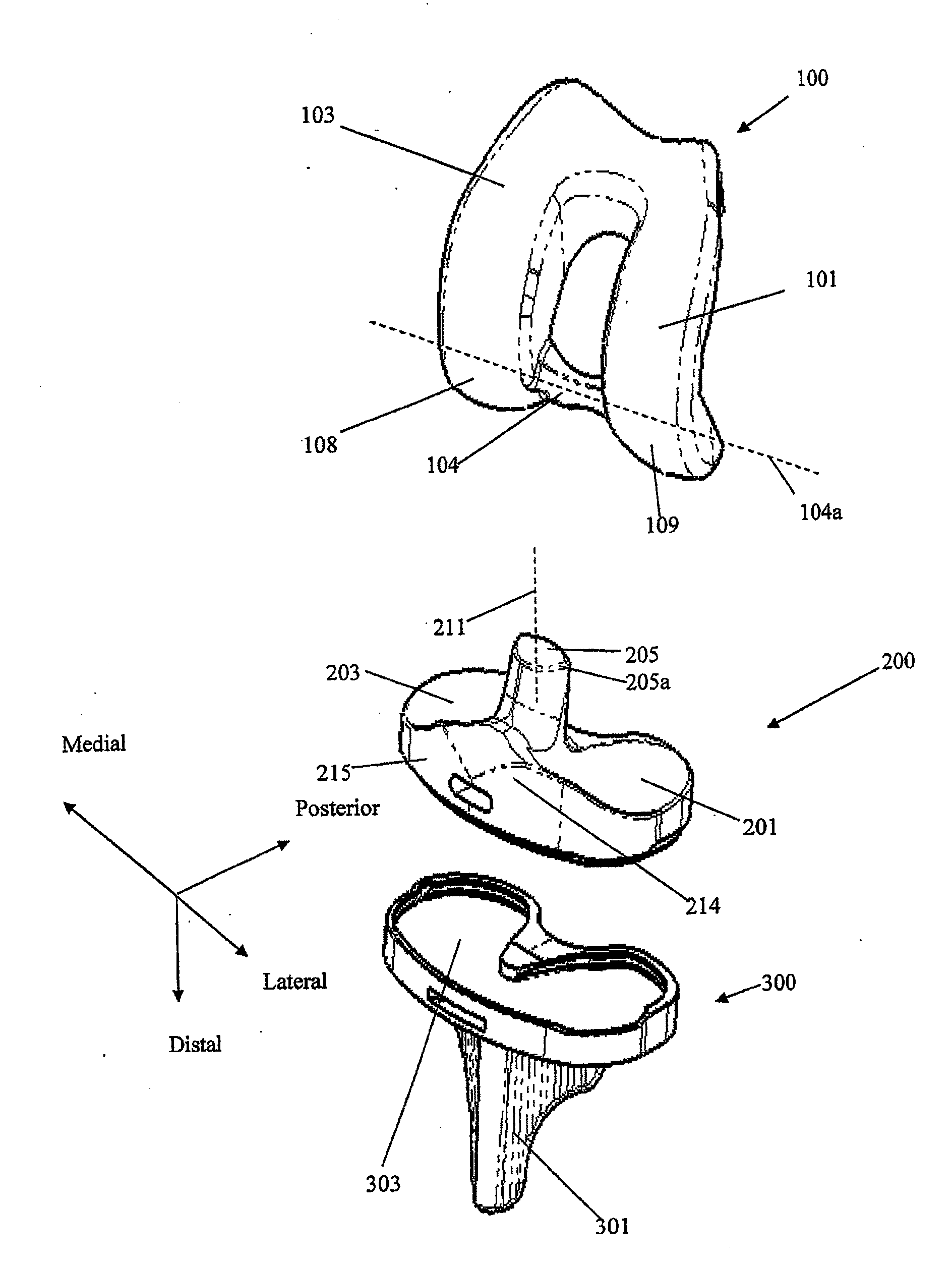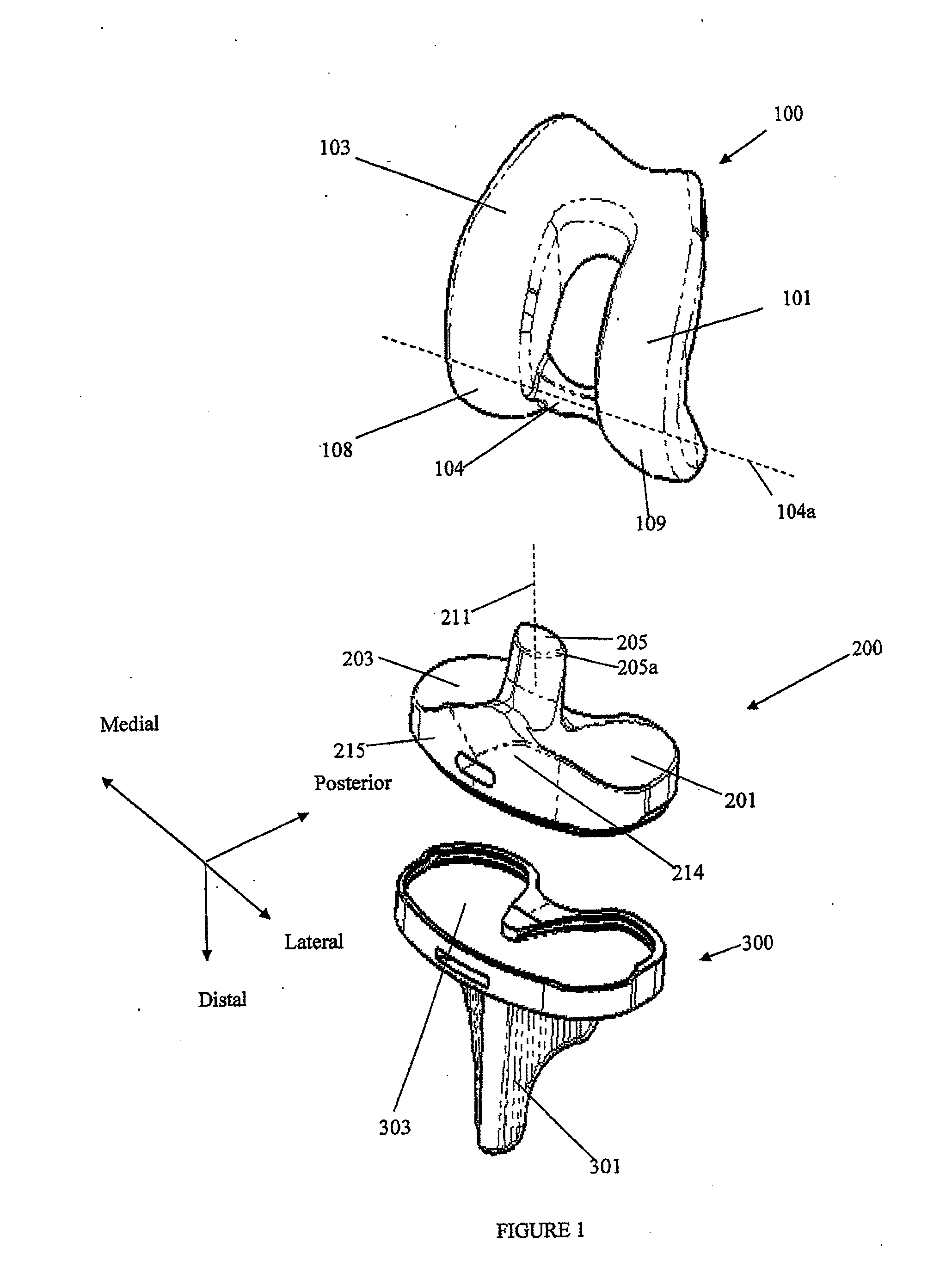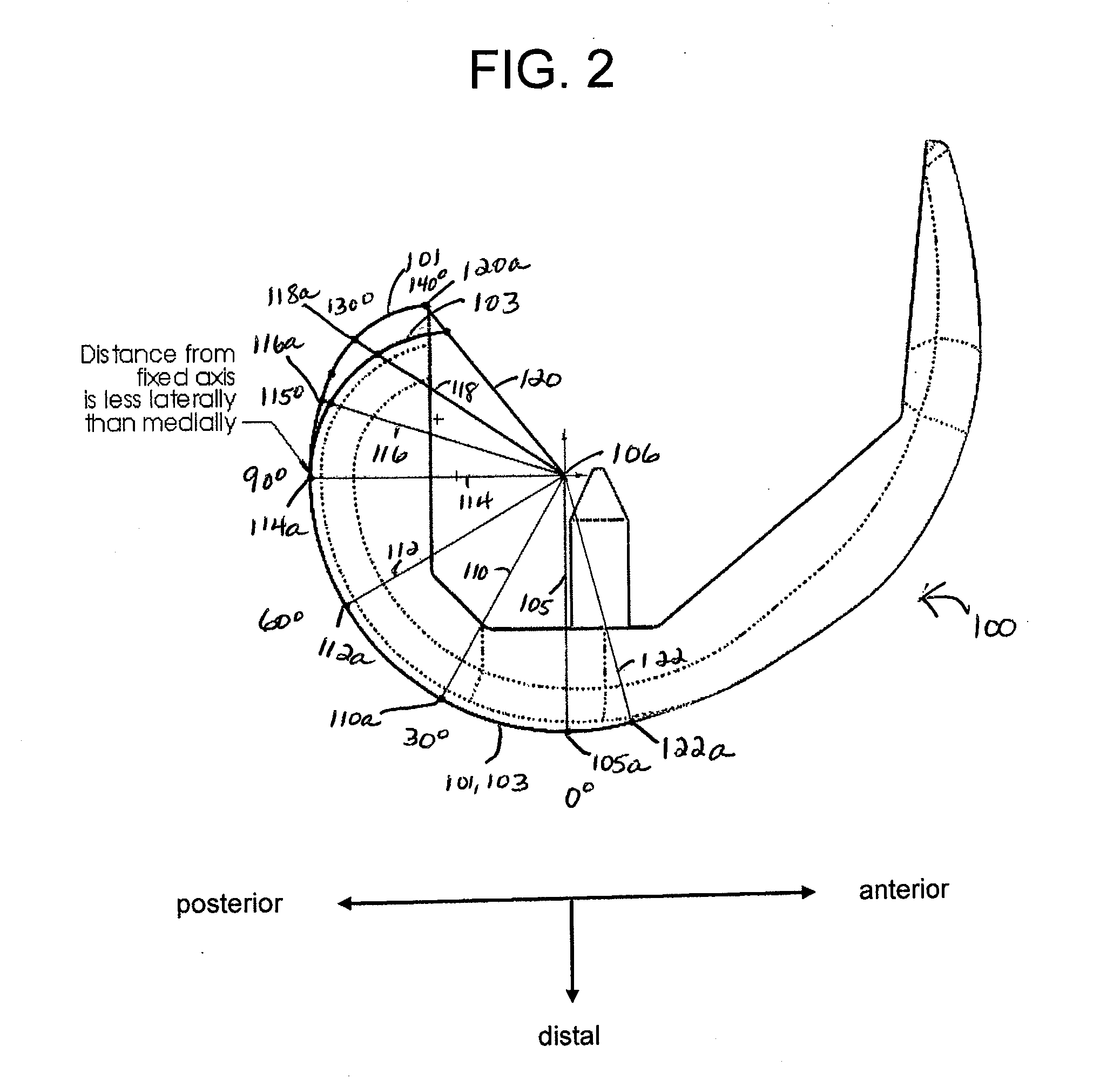Prosthetic joint
a technology for orthopedic prosthetics and knee joints, applied in the field of total joint replacement orthopedic prosthetics, can solve the problems of insufficient extension-flexion range of most tkr implants, difficulty in replicating with a prosthesis, and insufficient technology and materials for knee articular components of prosthetic knees to provide shape-change functionality, etc., to achieve the effect of preventing posterior subluxation of the tibia
- Summary
- Abstract
- Description
- Claims
- Application Information
AI Technical Summary
Benefits of technology
Problems solved by technology
Method used
Image
Examples
Embodiment Construction
[0043]FIG. 1 is an exploded view of several of the articular components of a TKR prosthetic implant in accordance with one embodiment of the invention. The implant comprises of a femoral articular component 100, a tibial articular component 200, and a tibial stem component 300. The femoral articular component 100 is placed on a patient's distal femur after appropriate resection of the femur. In some cases, to provide better support, the femoral articular component 100 may be mounted on a femoral stem (not shown) that is implanted into an intramedullary canal drilled into the distal femur. The femoral articular component 100 may be formed of any biocompatible material that is hard, durable, and has a relatively low coefficient of friction, such as polished cobalt chromium alloys, titanium alloys, or high molecular weight polyethylene. The femoral articular component 100 essentially replaces the condyles of the natural knee and therefore comprises two condylar articular surfaces, a me...
PUM
 Login to View More
Login to View More Abstract
Description
Claims
Application Information
 Login to View More
Login to View More - R&D
- Intellectual Property
- Life Sciences
- Materials
- Tech Scout
- Unparalleled Data Quality
- Higher Quality Content
- 60% Fewer Hallucinations
Browse by: Latest US Patents, China's latest patents, Technical Efficacy Thesaurus, Application Domain, Technology Topic, Popular Technical Reports.
© 2025 PatSnap. All rights reserved.Legal|Privacy policy|Modern Slavery Act Transparency Statement|Sitemap|About US| Contact US: help@patsnap.com



